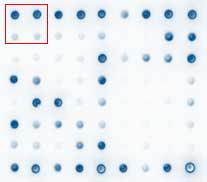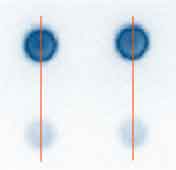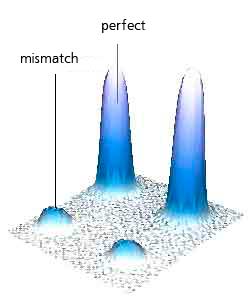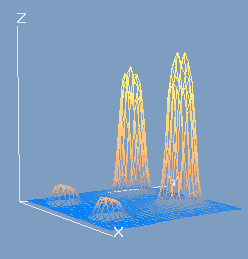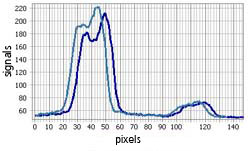|
||||||
 |
||||||
|
| |||||
|
|
|
principle of operationThe operation principle of all molecular microchips with immobilized probes consists in ability of biological macromolecules to molecular recognition (highly specific binding with the other molecules). For example, the formation of DNA duplexes obeys to Watson-Krick rule, A<->T и G<->C, while antibodies can form the stable specific immune complexes with particular parts of a protein (antigen) called antigen determinants or epitopes.
|
|
|
If the correspondence between immobilized molecular probes and labeled analyzed molecules satisfies the exact complementarity conditions, then the resulting complexes will be most stable thermodynamically.
Ideally, the formation of perfects and mismatches in the cells with particular probes should exactly correspond to the binary values 1 and 0 in the cells of electronic microchips. Thus, the cells with perfects and mismatches should be easily discerned by signal intensities. In a real situation the influence of non-specific binding may not be so small and the relevant differentiation of signals may be not so easy.
|
|

|
||||||||||||||||||||||||||||||||||||||||||
|
|
|
|
|
|
|
|
|||||||||||||||||||||||||||||||||||||||||||
|
|||||||||||||||||||||||||||||||||||||||||||||||||

